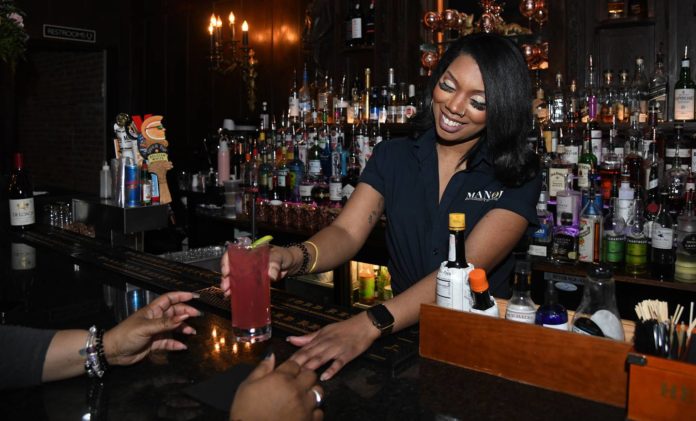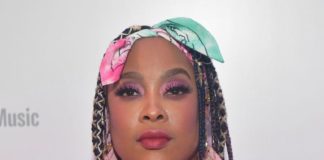Robert Lynch simply assumed that all bars served the same powerful drinks he was used to getting at LGBTQ bars in Mt. Vernon.
Six months ago he moved to Fells Point and noticed a stark difference in the bars.
Advertisement
“Going out in Mt. Vernon half the time you can barely finish a drink,” he laughed. “The gay bars definitely pour heavy handed. I realized I could have three or four drinks going to straight bars versus going to a gay bar and having one or two.”
Lynch, 36, an engraver and apparel decorator who identifies as gay, said that the sense of a close-knit community in LGBTQ bars lends themselves to generous servings of alcohol.
Advertisement
“They’re trying to make it feel welcoming,” he explained. “It comes down to community and a way to keep your customers coming back.”
In Baltimore-area gay bars and clubs there is an expectation among loyal patrons that bartenders will have a heavy hand when it comes to pouring liquor. It’s called “the gay pour” and it has become a hallmark of the gay nightlife experience. While there is debate over the beginnings of this trend or reasons behind it, there is no denying that these boozier pours exist in LGBTQ establishments.
:quality(70)/cloudfront-us-east-1.images.arcpublishing.com/tronc/GUT43GFB4VATFFN2HSSNVA5BLE.jpg)
There are several bars whose clientele is mostly heterosexual where a heavy pour is a regular occurrence, although they tend to be neighborhood dive bars. Some also suggest that straight establishments tend to be corporate owned and as a result have to follow certain rules, which dictate how much alcohol can be given to customers.
But in LGBTQ establishments — whether they are high-end or dive bars — the constant of a heavy pour exists throughout.
Myoshi Smith worked four years as a bartender in Brooklyn. She was known for her heavy pours and her LGBTQ customers would only come if she was working.
“They called it the ‘Myoshi pour,’” said the 33-year-old Pigtown resident who now works as a relationship enhancement specialist. “I think it’s wanting people to get looser quicker and have more fun. You’re not in a college dorm room. But we’ve all been places where you don’t taste any alcohol.”
For William Merling, a 28-year-old Mt. Vernon resident, gay bars — and the pours that come with them — provide a safe, familiarity that he doesn’t see when he goes to straight bars in other neighborhoods such as Fells Point.
“It’s easier to build a relationship with a bartender at a gay bar,” he explained. “It’s a sense of comfortability. You know you will be surrounded by people with a similar background and interest.”
Advertisement
Merling, who works as a health care recruiting manager and identifies as gay, said the heavier pours in a gay bar relates to the closer relationships that are built in gay bars.
“We relate to the same things. We open up to one another,” he said. “With a straight bartender there is always that type of awkwardness. We don’t know who will be accepting or who will be in what type of mood.”
:quality(70)/cloudfront-us-east-1.images.arcpublishing.com/tronc/Y44FTTSC45AHNOLRUKM4A56KTY.jpg)
Standing behind the sleek art deco wood and marble bar, J. Stratton is in her element. Without hesitation, she takes a bottle and pours a hefty amount of deep caramel colored rum into massive, tall cylinder shot glasses.
It wasn’t until Stratton worked at The Manor, an LGBTQ-owned and operated establishment in Mt. Vernon, 12 years into her career as a bartender that she realized that there was a difference in the amount of alcohol used in cocktails, shots and shooters.
“The first time I pulled out a jigger a customer said: ‘In all my years of drinking I’ve never seen that,” she said.
Stratton became a quick study. She was immediately told: “Girl, you better know how to pour.”
Advertisement
She also recalls the time that a heterosexual couple on a date who were dining in the bar complained that there was too much alcohol in their drinks: “If you’re an Applebee’s type of girl, you might not be able to drink our cocktails.”
A few blocks away in the heart of Baltimore’s “Gayborhood” Mt. Vernon at Leon’s, which touts being one of the nation’s oldest gay bars, customers expect two-for-one happy hour drinks until 9 p.m. each night, hours later than bars who offer happy hour until 6 or 7 p.m. When happy hour ends, those customers continue to expect cocktails to appear near clear because of a lack of mixers matched with a heavy pour.
Longtime bartender Joseph Bryan likes the no frills approach Leon’s bartenders take when serving drinks. “You won’t find fancy martinis here,” he said. “We do one liquor and one mixer.”
Bryan recalled starting work at Leon’s more than a decade ago: “I got yelled at by customers because the older bartenders poured stronger drinks. I learned fast.”
Robert Gay, co-owner of The Manor, said his customers tell him that they can spot the difference in the strength of drinks at his establishment versus other straight bars.
“In here we pour an extra two count. Other bars pour a one count,” he said.
Advertisement
Gay immediately stressed that the gay pour did not affect the bottom line as the majority of the heavier pours were with “rail” liquors, which are the least expensive brands.
In fact, Gay said that his biggest expense are the juices, bitters, mixers and garnishes used for craft cocktails.
:quality(70)/cloudfront-us-east-1.images.arcpublishing.com/tronc/72HIMIBUUBEOPK2U2QEOHBMVEA.jpg)
Chasmin “Chazz” Johnson took a big sip of purple concoction that Stratton whipped up and exclaimed: “I feel like I got my money’s worth. Some places I feel cheated. Here, I taste the alcohol. But I also taste the other ingredients.”
Johnson’s friend, Kelli Singleton took a sip of the same cocktail.
“I would get drunk off of that in a heartbeat,” she said as she slightly winced and took another sip.
Johnson, who also is a bartender at The Manor, but was a customer that night, equates a stronger pour with building good will with patrons.
Advertisement
“You won’t find this type of love anywhere else. I appreciate the pour. You can tell people appreciate it and they think they get their money’s worth. I think that the gay pour should be the standard pour,” she said.
The origins of the gay pour reveal decades of pain, mistrust and a desire to self-medicate.
At Leon’s, Bryan said the gay pour is almost a form of survival for customers.
“It’s because the gay experience is much harder than everyone else’s,” Bryan said. “We deal with homophobia, racism and day to day disrespect. We need a bigger release.”
Lynch theorizes that LGBTQ members are likely turning to bartenders and drinks as a form of therapy because they distrust the medical industry — in large part because of the way they have been treated by it in the past.
“For a long time, being gay was treated like a mental disease. It has held a huge stigma among the gay population. There is that apprehension,” he explained. “I would rather medicate on my own than to be told that something is wrong with me. I don’t know many gay friends who seek help even when they need it.”
Advertisement
The LGBTQ community has traditionally avoided utilizing health care services because members of the industry may be unaware of the specific needs of this group or may discriminate against them, which likely leads to them seeking to self-medicate, according to Karah Moody, LGBTQ+ program coordinator at River Oaks Treatment Facility near Tampa, Florida.
Weekend Watch
Weekly
Plan your weekend with our picks for the best events, restaurant and movie reviews, TV shows and more. Delivered every Thursday.
According to American Addiction Centers, 21% of transgender patients and 10% of patients who identify as gay, lesbian or bisexual have experienced harsh or abusive language, and 27% of transgender patients have been refused care from health care services.
“Whether the discrimination is overt or not, the overall inhospitable environment significantly impacts the likelihood of that patient seeking medical care,” Moody said.
“Self-medication through alcohol and/or substances in the LGBTQ population typically stems from traumas they’ve experienced or are avoidant coping strategies they’ve developed over time,” Moody added. “Members of the LGBTQ community do not begin drinking or using substances with the intent on developing a habit, it’s often used to numb themselves. Substance use can also act as a form of escapism.”
Smith said it made sense that her customers came to her as a form of therapy.
“We’re looking to take the edge off — and sometimes too much,” Smith said.
Advertisement
Smith said access was a prime reason why marginalized groups would seek to dull the pressures of the world through alcohol.
“It was hard to find someone in your network. You have to have the money. They may be out of pocket or not in network. But you definitely have access to your queer bartender,” she explained. “Bartenders are known to have a listening ear and nonjudgmental heart. At the end of the day, every person is looking to be seen, heard and validated. You really do get that at the bar.”








